Subduction Zone
Regular Member
To you.
To any rational person. What difference can you show?
Upvote
0
To you.
Xena has been renamed Eris.I have been eying the New Horizon mission (New Horizons Web Site) ever since it launched in 2006. Too bad it could not set its path to 'Xena' after it explores Pluto!
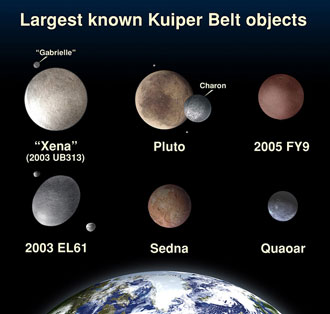
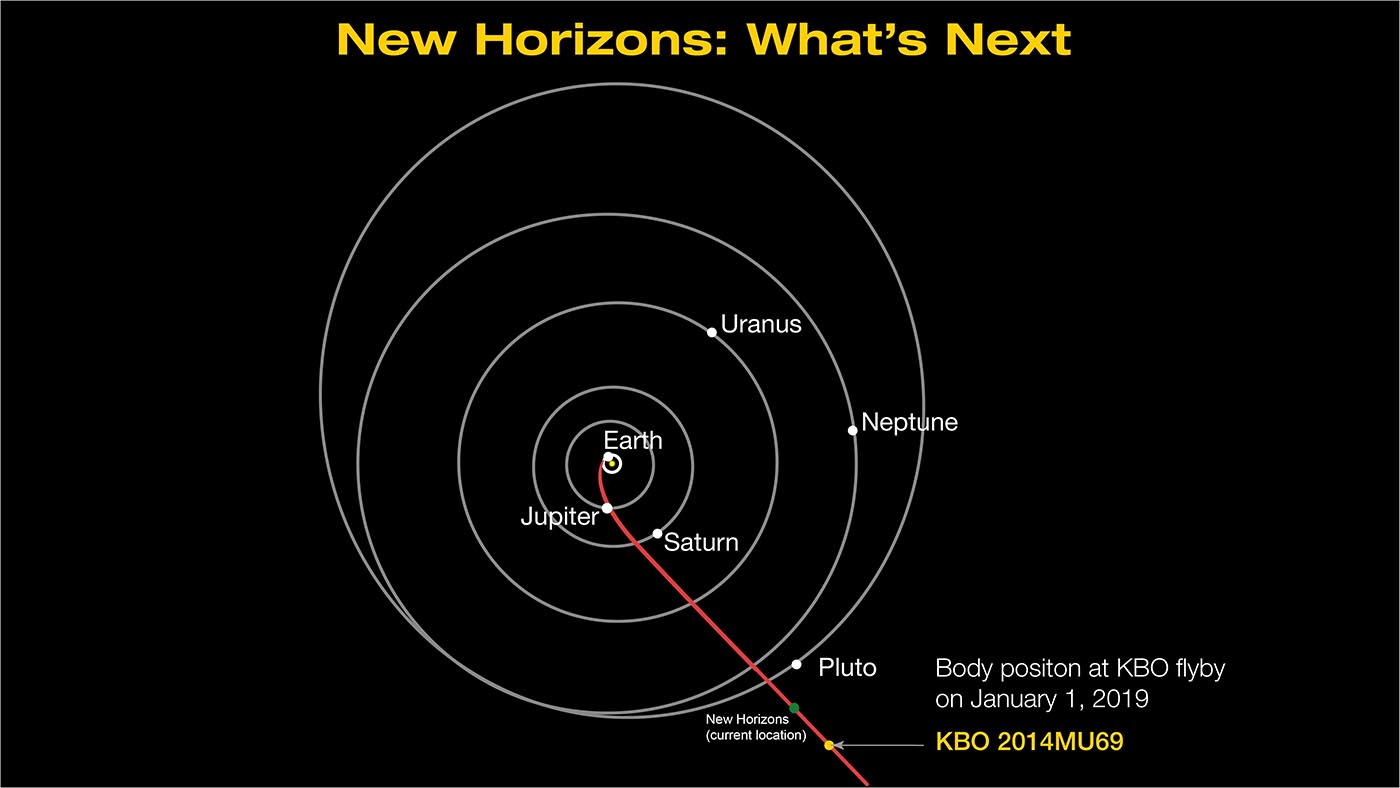

New Horizons Refines Course for Next Flyby and NASA Spacecraft Also Observes Distant Kuiper Belt Objects
New Horizons
06/28/2015 - 14.54 km/s (32,525 mph)
07/22/2015 - 14.51 km/s (32,458 mph)
08/14/2015 - 14.50 km/s (32,435 mph)
10/31/2015 - 14.47 km/s (32,368 mph)
11/06/2015 - 14.46 km/s (32,246 mph)
01/14/2016 - 14.45 km/s (32,323 mph)
12/24/2016 - 14.43 km/s (32,184 mph)
02/01/2017 - 14.31 km/s (32,000 mph)

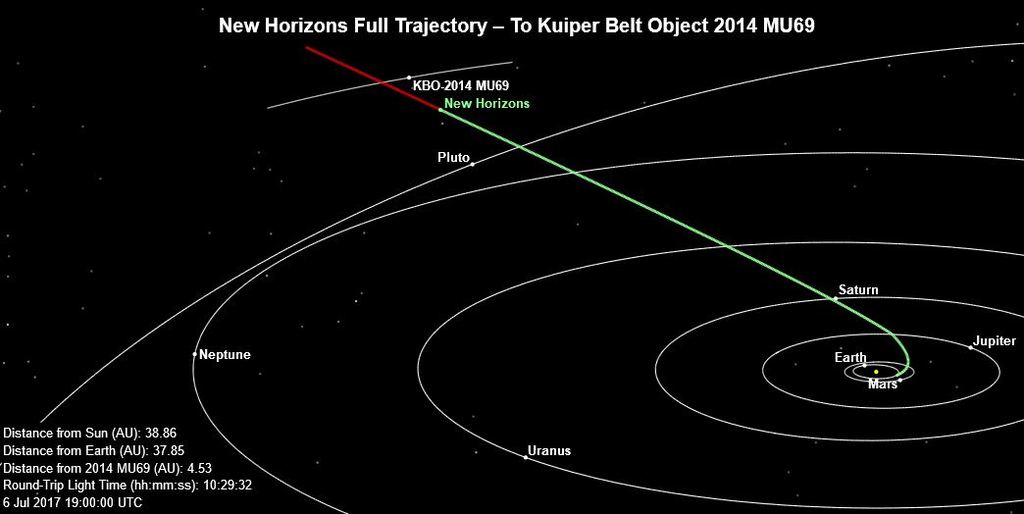
Scientists have been sifting through data gathered from observing the MU69 object's quick pass in front of a star – an astronomical event known as an occultation – on June 3
New Horizons
06/28/2015 - 14.54 km/s (32,500 mph)
07/22/2015 - 14.51 km/s (32,500 mph)
08/14/2015 - 14.50 km/s (32,400 mph)
10/31/2015 - 14.47 km/s (32,400 mph)
11/06/2015 - 14.46 km/s (32,200 mph)
01/14/2016 - 14.45 km/s (32,200 mph)
12/24/2016 - 14.43 km/s (32,200 mph)
02/01/2017 - 14.31 km/s (32,000 mph)
06/02/2017 - 14.27 km/s (31,900 mph)
07/06/2017 - 14.26 km/s (31,900 mph)
Distance from MU69 - 4.5 AU
544 days until the 2014 MH69 Flyby
January 1, 2019

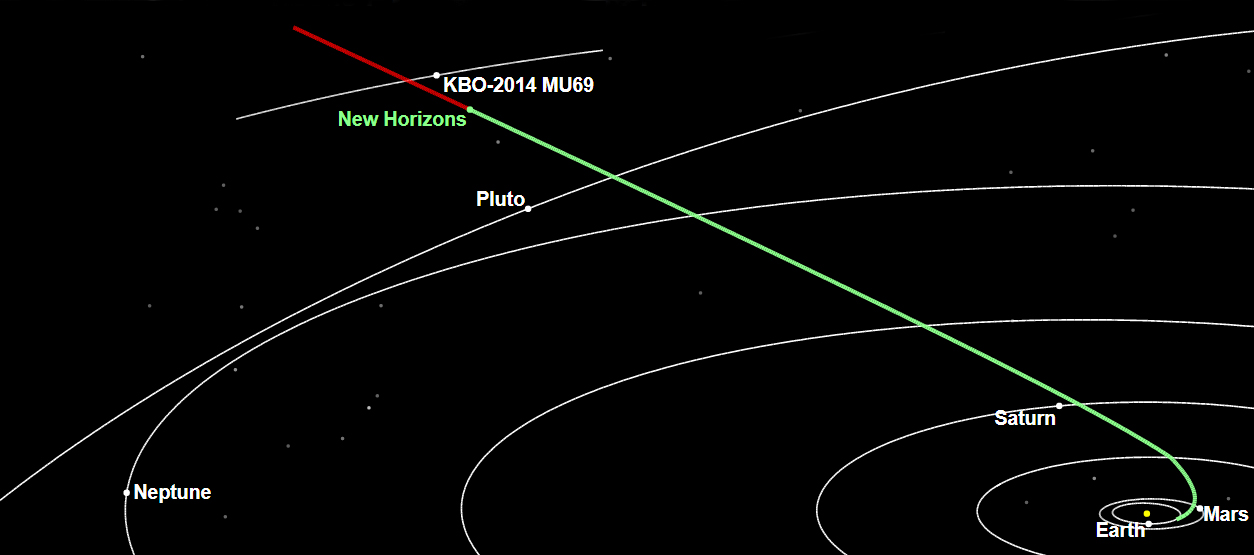
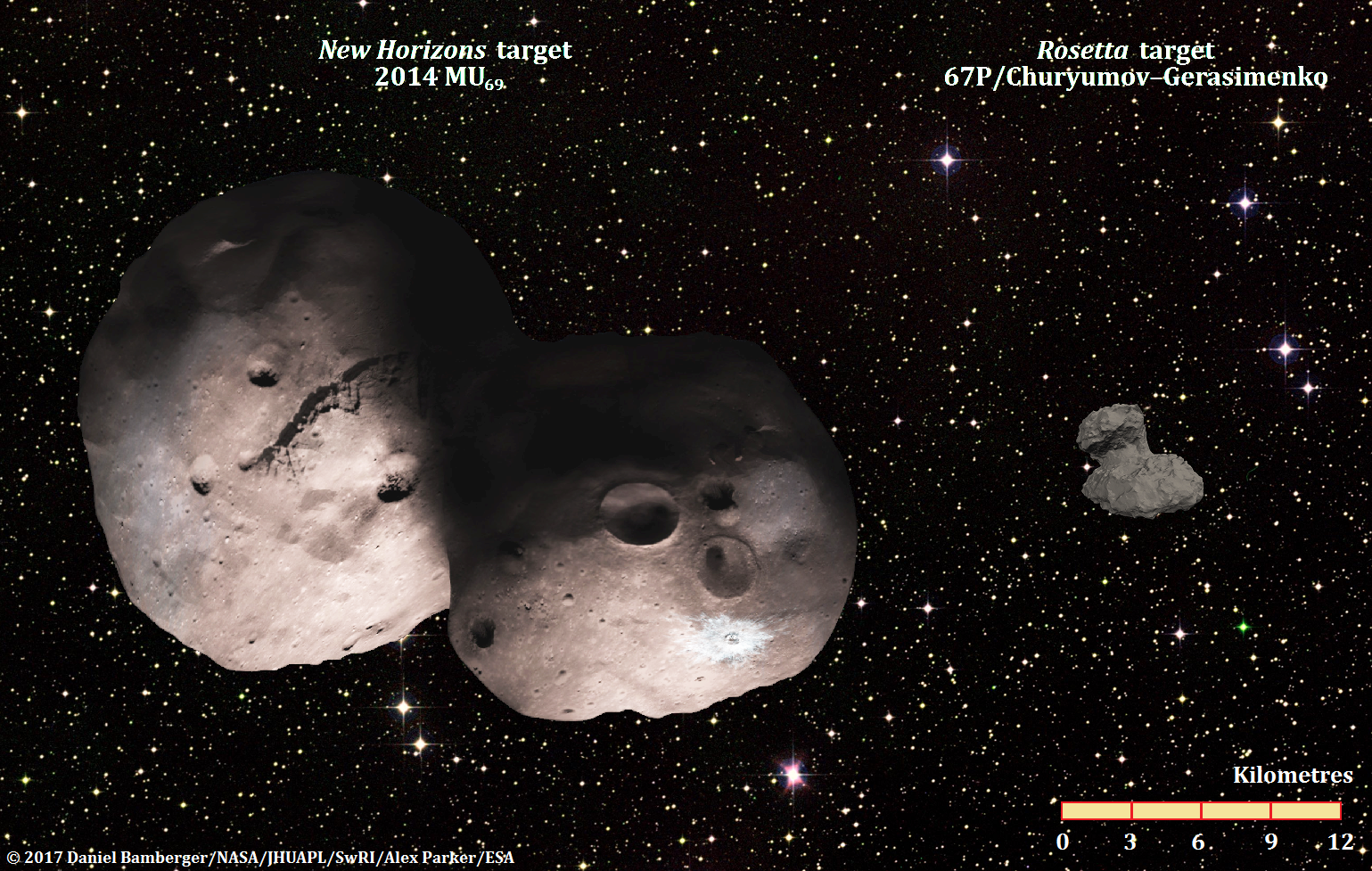
You really have to hand it to the engineers and scientists that, designed, built, launched and maintain this equipment. It's survived for years in the hostile environment of space and it's still capable of producing some important information about our solar system, long after it has already completed it's primary mission.
It's amazing how much information about space and about objects in our solar system that has all become accessible during my lifetime. My hat is off to all people and all the hard work that has made that possible. I'm in awe of their accomplishments.
Those targets are a long way away! It is also amazing how they can plan a flyby. The spacecraft has got to spin as it passes its target. If your math is not correct all you will see is stars as the spacecraft needs to turn at precise maneuvers to remain pointed at the object.
Those targets are a long way away! It is also amazing how they can plan a flyby. The spacecraft has got to spin as it passes its target. If your math is not correct all you will see is stars as the spacecraft needs to turn at precise maneuvers to remain pointed at the object.
Indeed, it is a remarkable feat, one that requires a very firm understanding of the position and motion of the craft (New Horizons) and the of the target object. It also requires a similar level of understanding of the forces that change the velocities inside the spacecraft (the thrusters, etc.) and of the gravitational pull from near and far (the Sun) bodies.
